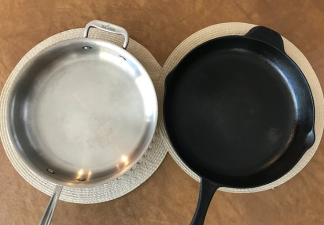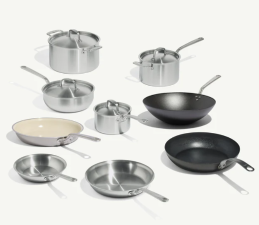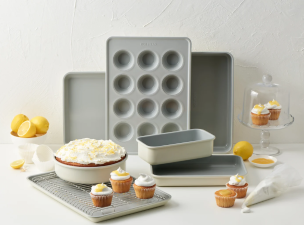Stainless Steel vs. Cast Iron: Which Is Better?
In today's fast-paced world, the choice of kitchen appliances directly impacts our cooking efficiency and enjoyment. As a staple in every kitchen, the electric wok has become a go-to for culinary enthusiasts. However, faced with the dazzling array of electric woks on the market, many people struggle to choose, especially when deciding between cast iron and stainless steel woks.
Each has its own unique advantages and applications. Choosing the right wok not only improves cooking efficiency but also enhances the flavor of your dishes. Cast iron woks are known for their excellent heat retention and even heating, while stainless steel woks are favored for their lightness, convenience, and durability.

Cast Iron Woks
Cast iron woks are a type of iron wok, commonly categorized as cast iron and fine iron. Cast iron woks, also known as pig iron woks, are made by melting gray iron and casting it into a mold. They have a high carbon content, making them relatively brittle. They are thicker and heavier, and their body conducts heat relatively slowly, distributing heat evenly and preventing food from burning.
Stainless Steel Woks
Stainless steel woks are made by adding a certain amount of chromium to steel, which creates a durable oxide film on the steel surface that's insoluble in certain media. These woks are aesthetically pleasing, easy to clean, and highly corrosion-resistant, making them rust-resistant. They're commonly used for soup pots, steamers, and milk pans, but are less commonly used as woks. 304 and 316 stainless steel are the most common types; when choosing 304 stainless steel, look for SUS304.

Comparison
① Advantages of Cast Iron Woks
The greatest advantage of cast iron woks is their excellent heat retention. Due to the properties of cast iron, these works maintain a stable temperature for extended periods, making them ideal for cooking methods that require prolonged, even heating, such as frying, roasting, and stewing. Furthermore, cast iron woks distribute heat evenly during heating, preventing overheating and burning. Cast iron works are a great choice for stewing meats or making rich soups.
② The Convenience of Stainless Steel Woks
Compared to cast iron pans, stainless steel woks are the preferred choice for many families due to their portability and ease of cleaning. Stainless steel not only makes the wok lighter, making it easier to move and clean, but its smooth surface resists food residue, making it incredibly easy to clean. This type of wok is particularly suitable for everyday cooking tasks like stir-frying, boiling noodles, and making soup, which require frequent stirring and quick cleaning.
③ Comparison of Applications
When choosing a wok, first consider your cooking habits and the types of dishes you typically prepare. For families who enjoy slow-cooking dishes or require lengthy cooking times, a cast iron wok is undoubtedly an ideal choice. For those who are pressed for time and need to complete daily cooking tasks quickly, a stainless steel wok is more suitable.
④ Durability and Maintenance
While cast iron woks are durable, they require regular maintenance to prevent rust, typically requiring regular oiling. Stainless steel woks, on the other hand, are relatively easy to maintain, rust-resistant, and have a long lifespan. However, care should be taken to avoid scratching the wok with sharp tools. When choosing a wok, consider your family's usage habits and maintenance requirements.
⑤ Price and Value
Generally speaking, cast iron pans are slightly more expensive than stainless steel pans, due to their material and craftsmanship. However, for those who value long-term use and excellent cooking results, the high cost-effectiveness of cast iron pans cannot be ignored. Stainless steel pans are also a good choice for their affordability and everyday convenience.


